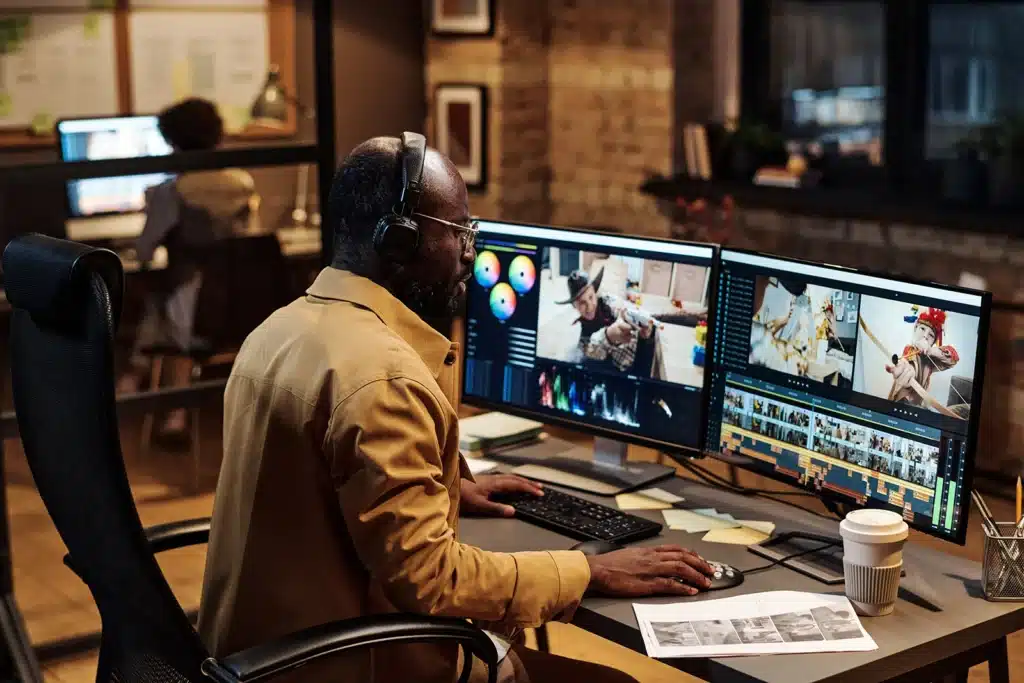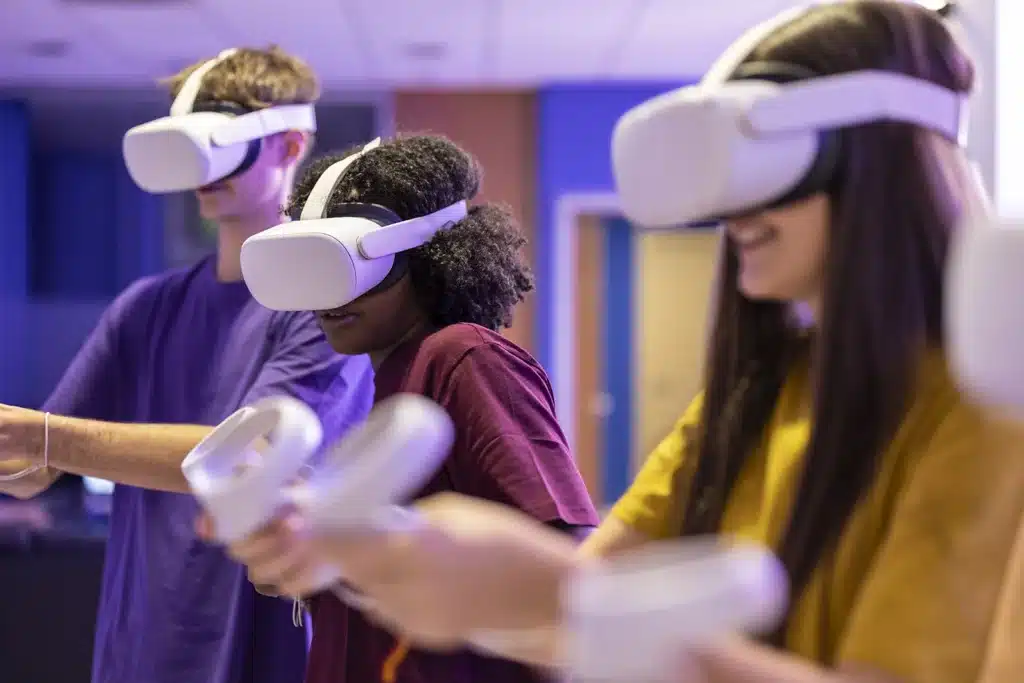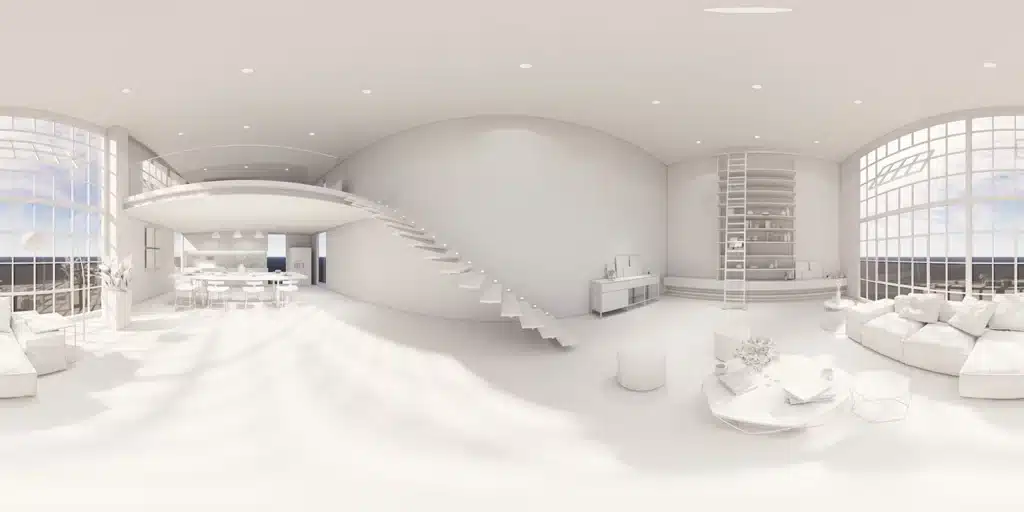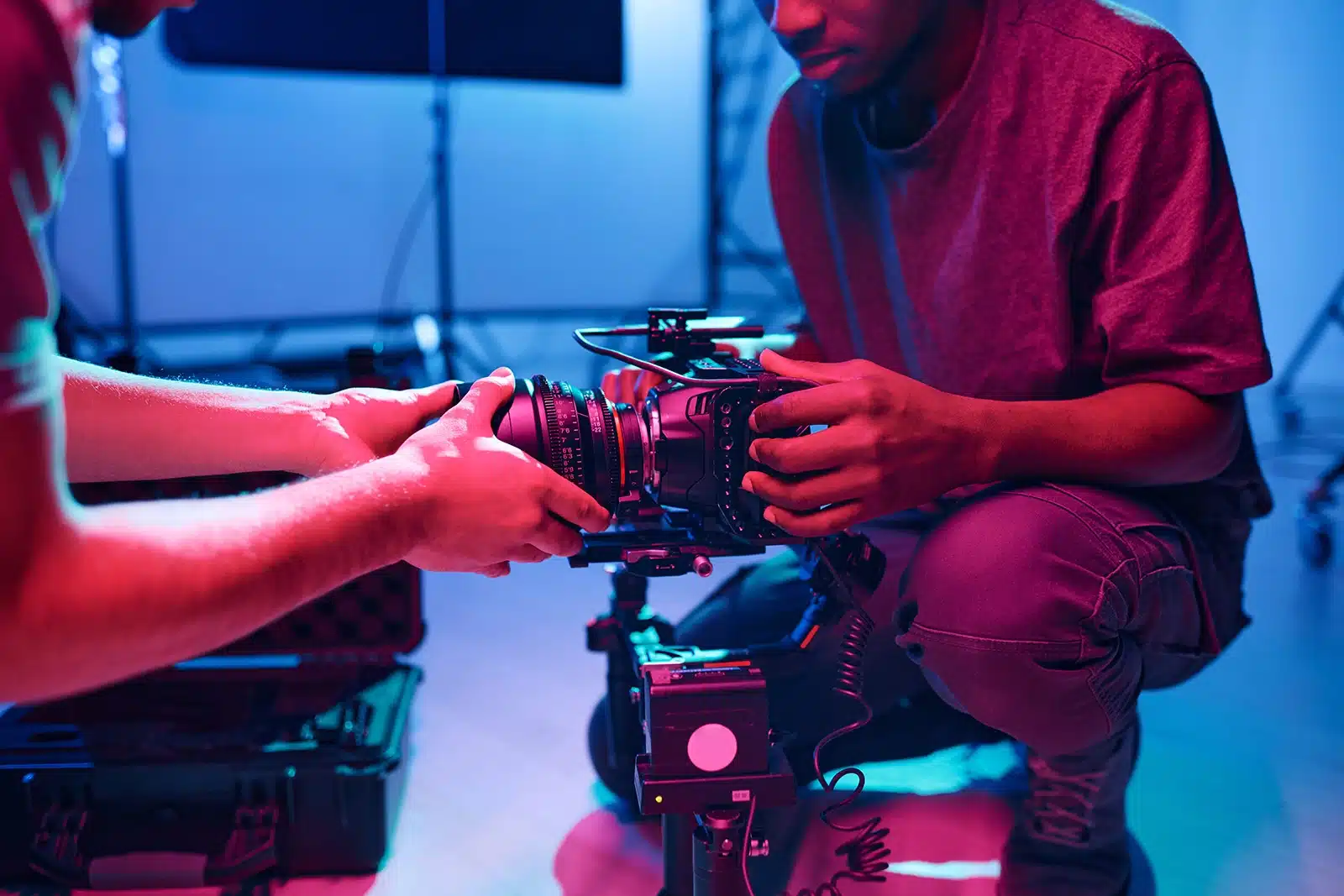It’s not a secret that video has become an essential tool for businesses to connect with their audience. With the rise of social media and the increasing demand for visual content, video production has become crucial in marketing and communication strategies. However, video production is not limited to marketing and advertising. It can also be used to create 360-degree experiences that elevate user engagement and provide a unique and immersive experience for viewers.
We’re going to explore the concept of 360-degree experiences and how video production can be used to create them. We’ll also discuss the benefits of incorporating 360-degree experiences into your business strategy and how it can help you stand out in a crowded digital world.
What Are 360-Degree Experiences?
A New Dimension of Video Production

360-degree experiences are a form of video production that allows viewers to interact with the content and explore their surroundings in a 360-degree view. This type of video production uses specialized cameras and software to capture a 360-degree view of a location or event.
Unlike traditional videos, 360-degree experiences allow viewers to control their perspective and choose what they want to see. This creates a more immersive and engaging experience for the viewer, making them feel like they are a part of the video.
Types of 360-Degree Experiences
There are various types of 360-degree experiences that can be created through video production. Some of the most common types include:
- 360-Degree Videos: These are pre-recorded videos that allow viewers to control their perspective and explore the surroundings in a 360-degree view.
- Virtual Reality (VR) Videos: These are 360-degree videos that are viewed through a VR headset, providing a more immersive experience for the viewer.
- Live 360-Degree Videos: These are live-streamed videos that allow viewers to experience an event or location in real-time, giving them a sense of being present at the location.
The Process of Creating 360-Degree Videos?

Creating a 360-degree experience through video production involves several steps, including:
- Planning: The first step is to plan the content of the video and determine the location or event that will be captured in 360-degrees.
- Camera Setup: Specialized cameras with multiple lenses are used to capture a 360-degree view of the location or event.
- Shooting: The video is then shot using the 360-degree camera, capturing all angles and perspectives.
- Stitching: The footage from the multiple lenses is stitched together using specialized software to create a seamless 360-degree view.
- Editing: The video is then edited to add any necessary effects, transitions, and sound.
- Distribution: The final video is distributed through various channels, such as social media, websites, or VR platforms.
Benefits of Incorporating 360-Degree Experiences into Your Business Strategy
Increased User Engagement

A main benefit of 360-degree experiences is the increased user engagement it provides. By giving viewers the ability to control their perspective and explore their surroundings, 360-degree videos create immersive and interactive experiences, keeping viewers engaged for longer periods.
This increased engagement can lead to higher retention rates and a better understanding of the content being presented – especially beneficial for businesses looking to educate their audience about their products and services.
Differentiation from Competitors
It can be challenging to stand out from the competition. However, incorporating 360-degree experiences into your business strategy can help you differentiate yourself from your competitors. They offer a refreshing take on visual storytelling, that your competitors are likely not taking advantage of. Providing a unique and immersive experience for your audience can capture their attention and leave a lasting impression. This can help you stay top-of-mind and increase brand awareness.
Increased Social Media Reach

Social media has become a powerful tool for businesses to connect with their audience. With the rise of visual content on social media, incorporating 360-degree experiences into your social media strategy can help reach a wider audience. Platforms like Facebook and YouTube support 360-degree videos, making it easier for businesses to share their content and reach a larger audience. This can also lead to increased engagement and shares, further expanding your reach.
Enhanced Customer Experience
As mentioned earlier, 360-degree videos are being used to enhance the customer experience. A great example is the event industry where they use 360-degree videos to showcase their venues and give potential customers a virtual tour. Similarly, businesses in the travel industry use 360-degree videos to showcase their destinations and give viewers a taste of what they can expect when they visit. This can help businesses create a more personalized and memorable experience for their customers.
Social Media Video Production
Social media has become a powerful tool for businesses to connect with their audience. With visual content being so imperative, incorporating 360-degree experiences into social media video production can help businesses stand out and increase engagement. Real estate companies use 360-degree videos to showcase properties and give potential buyers a virtual tour – helping them attract more leads and stand out from their competitors.
Who Can Benefit from 360-Degree Experiences?

360-degree experiences can benefit a wide range of industries and businesses, including:
- Real Estate: Real estate companies can use 360-degree videos to showcase properties and give potential buyers a virtual tour.
- Travel and Tourism: Travel and tourism companies can use 360-degree videos to showcase destinations and give viewers a taste of what they can expect when they visit.
- Event Industry: Event planners can use 360-degree videos to showcase venues and give potential clients a virtual tour.
- Marketing and Advertising: Businesses in any industry can use 360-degree experiences in their marketing and advertising strategies to stand out and increase engagement.
How to Get Started with 360-Degree Experiences
If you’re interested in incorporating 360-degree experiences into your business strategy, it’s best to connect with experts who can create a professional yet alluring experience for your audience. In the meantime, here are some steps to get started:
- Determine Your Goals: Before you start, determine what you want to achieve with 360-degree experiences. This will help you create a more targeted and effective strategy.
- Choose Your Platform: Decide where you want to distribute your 360-degree videos. This could be social media, your website, or a VR platform.
- Invest in the Right Equipment: To create high-quality 360-degree videos, you will need specialized cameras and software. Do your research and invest in the right equipment for your needs.
- Partner with a Professional: If you’re new to 360-degree video production, consider partnering with a professional video production company. They can help you create high-quality videos that meet your goals and stand out from the competition.
Takeaways
360-degree experiences are a new dimension of video production that can elevate user engagement and provide a unique and immersive experience for viewers. By incorporating 360-degree experiences into your business strategy, you can stand out from the competition, increase social media reach, and enhance the customer experience. Consider partnering with a professional video production company to create high-quality 360-degree videos that meet your goals and help you achieve success.




